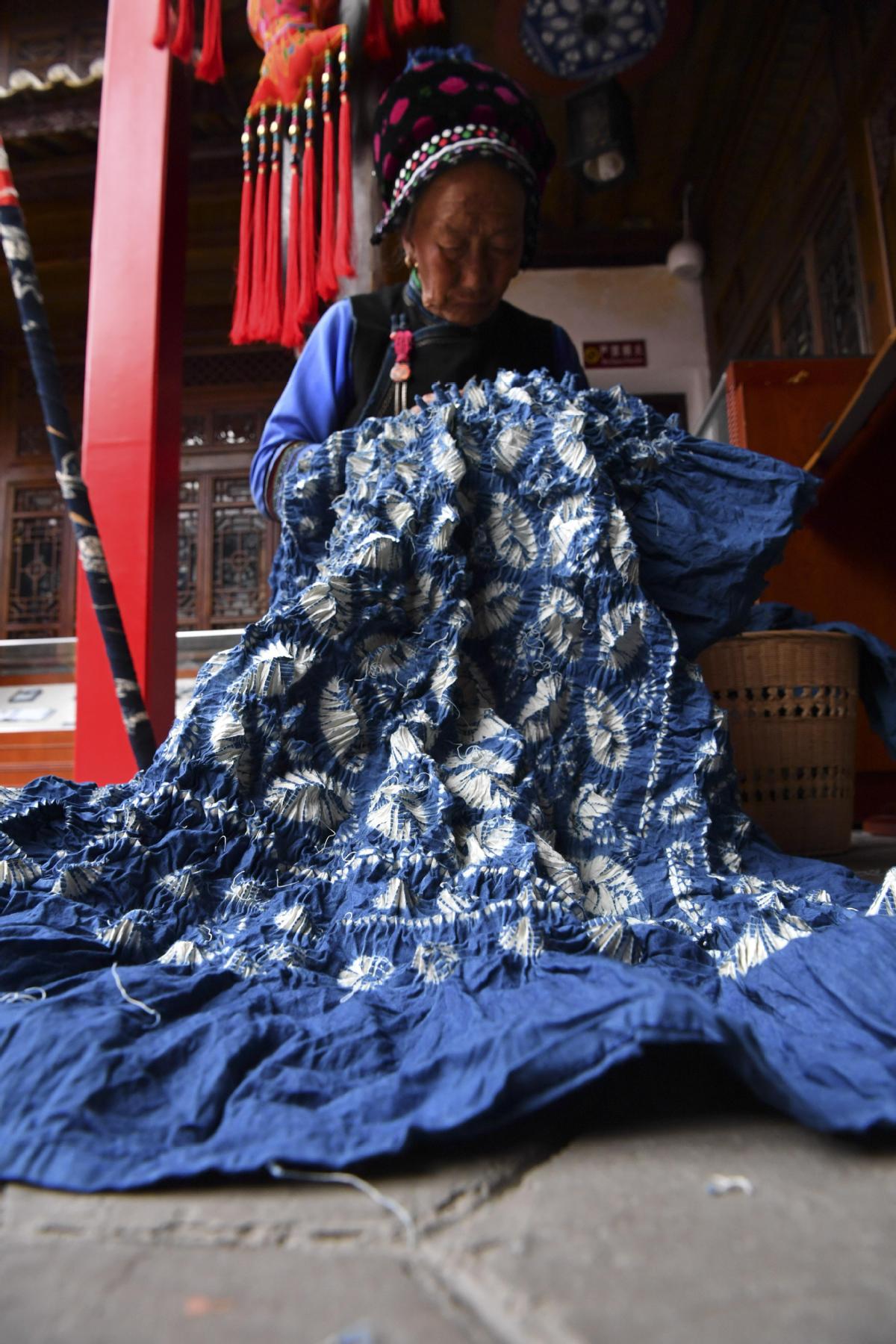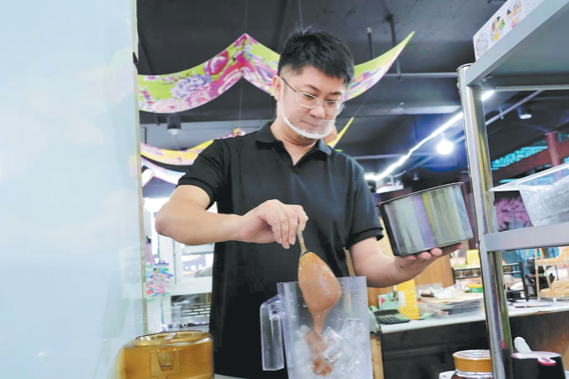Buza craftwork creates a new buzz


Zhang, however, saw obstacles as opportunities. She began running a manicure parlor in 2006, and then started learning buza-making techniques from elderly artisans six years later.
Believing that in order to promote the traditional handicraft, it should meet consumers' demands, she initially designed a variety of items, such as cardholders, key chains and brooches that proved popular with young people.
Other small decorative items suitable for cars and bedrooms also garnered a lot of orders.
In 2018, Zhang invested more than 100,000 yuan ($14,300) to open the buza experience store.
"We have expanded both the time of wearing buza and the space of using this traditional handicraft, thus opening a broader market for the craftwork," Zhang said.
In Jianchuan's Xinren village, Yang Yinmei is one of many village women who make buza after completing their farm work. They recently completed a large order for more than 1,000 buza trinkets.
"The price of one piece ranges from less than 100 yuan to over 1,000 yuan, and more than 10 people are engaged with me in crafting buza," Yang said. The handicraft has allowed many villagers to earn extra cash.
In recent years, the government and NGOs arranged buza-making classes for many villagers like Yang so they could shake off poverty and lead better lives.
After receiving feedback that many of her ornaments seemed quite juvenile to adults, Yang developed ornaments that appealed to couples and also made some buza bracelets. "Though tradition should be preserved, at the same time evolution is also necessary to keep the handicraft alive," she said.
Xinhua
- Viral video shows meteor streaking over Helan Mountains in Ningxia
- China innovates network technology, achieving efficient data transmission
- More international maritime disputes turn to China's courts
- Chinese researchers inject AI power to evidence-based medicine
- Harbin Ice and Snow World opens with expanded park
- Visa-free transit policies spur surge of foreign visitors





































